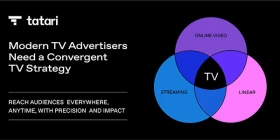By Charlene Weisler
Fraud remains one of the top concerns for marketers and digital companies. A new study by cybersecurity company CHEQ found that 15% of all influencer ad dollars are spent on fake followers, costing brand advertisers a projected $1.3B globally in 2019.
 A study titled The Economic Cost of Bad Actors on the Internet; Fake Influencer Marketing in 2019 by Professor Roberto Cavazos, Merrick School of Business at the University of Baltimore, reports that the total cost of fraud and the resulting loss of trust, “extends beyond the affected business. Entire sectors and economies are adversely impacted.” Influencer marketing spend is big and growing; Mediakix reports that 2019 influencer marketing spend is $8.5 billion globally and is expected to reach up to $10 Billion in 2020, up twentyfold since 2015 when spend on social influencers globally was $500 million.
A study titled The Economic Cost of Bad Actors on the Internet; Fake Influencer Marketing in 2019 by Professor Roberto Cavazos, Merrick School of Business at the University of Baltimore, reports that the total cost of fraud and the resulting loss of trust, “extends beyond the affected business. Entire sectors and economies are adversely impacted.” Influencer marketing spend is big and growing; Mediakix reports that 2019 influencer marketing spend is $8.5 billion globally and is expected to reach up to $10 Billion in 2020, up twentyfold since 2015 when spend on social influencers globally was $500 million.
When it comes to Fake Followers, there are four main ways to game the system:
Automation can be used to build followers to appear as if they are among the top influencers. Nik Speller, head of campaigns at influencer marketing agency Influencer says: ‘‘They use automated services, to act on your behalf to follow people, unfollow them again, like content, comment on content, just to do all that underlying stuff that an account has to do sometimes to grow and do it in a turbo-charged way. In this way all of a sudden you follow 500 people, 200 follow you back, you unfollow them, you’ve got 200 followers and it looks like you are important because your follower number is bigger than the number of people you follow.’’ Speller believes this practice is fraudulent and against social media network’s terms of service as it consists of spamming.
Use of “Pods” which allow influencers to trade engagement back and forth on each other’s posts, as part of a community. This involves one influencer commenting on or liking a certain number of posts, and is reimbursed in kind with comments on their own activity and posts. Cavazos noted that, “This is clearly not what brands have in mind when creating and paying for campaigns.”
Sponsored posts. Some bad players publish what is purported to be sponsored posts on behalf of brands they are not actually working with. “In some cases, they engage in this dubious behavior with fake sponsored posts to dupe brands into believing they have a proven track record – and in order to get hired for a future engagement,” according to Cavazos’ study.
Goosing Inactivity. Even real followers can be problematic when audience inactivity on many networks is considered. In a situation where 30% of some social media accounts have been claimed to be inactive, digital analyst Brian Solis says, ‘‘Many influencers have no access to 90% of their audience simply because it no longer uses the social network where they were followed. This doesn’t stop them from touting millions of followers, who will, of course, never see your content.’’
Complexity is a well-known cause of fraud in many domains. Cavazos explains that, “Ad fraud losses to the economy are expected to be more than 20-times the costs of Influencer marketing losses in 2019. However, the growing popularity of influencer marketing brings with it greater opportunities for fraud as the number of players increase and more players are involved around this economy across an expected 4.4 million influencer promoted posts in 2019. The opportunities for accountability and monitoring diminish as the sector increases. In addition, the industry is moving towards greater depth and complexity through other means, with so-called micro influencers and nano-influencers joining the payroll of brands.”
While there are efforts to combat fake influencer fraud, marketers should be aware that we are not there yet.







